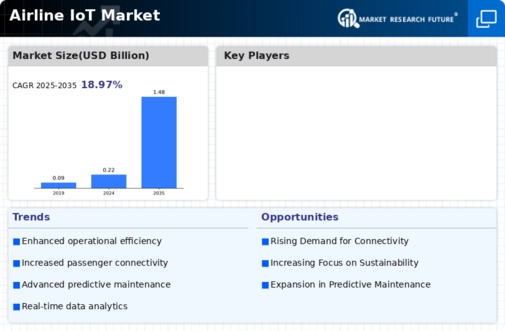Market Analysis
In-depth Analysis of Airline IoT Market Industry Landscape
Interconnectedness between the Airline Industry of Things (IoT) and the market varies from one another. They mutually change the behaviour of the others as they contend in the same industry making similar choices. An essential element leading to the positive prevalence of airline IoT technology is the rising quest to be more efficient in operation. Airlines are persistently challenging to balance are the optimization of operations, the reduction of costs and the general improvements on efficiency. IoT solutions (IOT) operate by the deployment of sensors together with data analytics, which in turn work as the real-time monitors of the aircraft parts such as fuel, components, and maintenance needs. By employing complete data-based approach, they may be able to ground the decisions on knowledge through which the process can be made efficient whereas the downtime can be reduced.
The world Airline IoT market that was worth nearly $0.15 Billion in 2022, due to the technologies used is expected to witness high growth and will make its way from $0.18 Billion in 2023 to reach $0.88 Billion as early as 2032. What follows is the projection rate of the compound annual growth rate (CAGR) between 2023 and 2032, at 21.80%. Although the market has a downward trend, the growing number of adopted IoT devices in an airline industry that as well as the growing demand for advanced Internet of Things technologies definitely to be the key components that deeply impact the market and plays the role of increasing its value are the cause of market growth. IoT encompasses such things as the check-in procedure as well as a large aspect of personalized in-flight services, which contributes to the fact that the traveler’s journey is an amazing experience minus the hassle. Achieving these expectations is not just the aircraft operators’ competitive benefit, but rather a major driving element for the Airline Internet of Things (IoT) market as well.
In addition to the determination in predictive maintenance for the aviation markets it plays an essential role in the market as well. Having prevention of aircraft interruptions to guidelines and adherence to the required safety standards, the concept of predictive maintenance becomes a common factor. With advanced IoT sensor technologies, aircraft components can be monitored on the move and have their real-time condition checked. Airlines can now use machine learning algorithms to predict technical problems before they happen. Hence, the companies can do bighty run maintenance without worrying about in-flight incidents and can assure overall safety.
The Airline IoT market is driven by factors like fuel efficiency and ecological sustainability and these two things constitute very appealing market attributes. Among other factors is the growing stress over the effects of climate change and the necessity for airlines to follow regulations that reduce carbon emissions, the aviation industry is turning to the Internet of Things (IoT) to monitor and improve energy efficiency. The both elements of cost-effectiveness and being an alignment with global initiatives for environmental-aware aviation industry are achieved.
The interdependence of the airline IoT eco system and also the partner collaborations among industry makers is a catalyst for the growth of the airline IoT market. Airlines, companies developing technology, and manufacturers of aircraft are forming botherships to design systems that cover the entire aviation system. In this cooperating, the rhythm will be increased, application of the same IoT solutions will be promoted, and data transmission among various platforms will become possible.









Leave a Comment